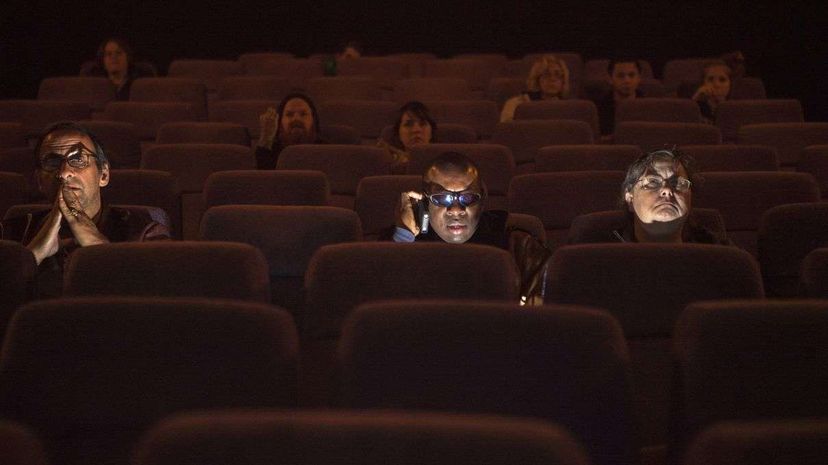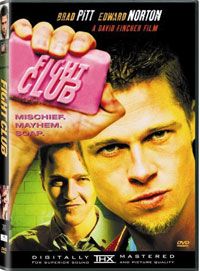
For most people watching "Fight Club," the audio opens with, "People are always asking me if I know Tyler Durden." It's a brilliant first line, dramatically contrasting the opening visual with its apparent nonchalance, foreshadowing something big.
Can't picture the opening visual? The line might seem less brilliant, then. You're currently in the same boat as a blind person experiencing "Fight Club."
Advertisement
Happily for these moviegoers, "Fight Club" can also open like this: "(The narrator, a 20-something man called Jack, has a gun in his mouth. Sweat drips off his forehead.) People are always asking me if I know Tyler Durden."
The italicized lines are "audio description," or AD. Also known as "descriptive video," it's an accessibility technology in which a narrator describes what's happening visually in a scene so people with vision impairments know what's going on. At a movie theater, they can request a free AD receiver and plug in with headphones.
That is, only if the theater is AD-equipped. Not all of them are. And not all movies have descriptions, either. In an email interview, Joel Snyder, director of the American Council for the Blind's Audio Description Project, estimates that only about half of today's movies have AD.
Some live theater productions, museum exhibits and television shows offer audio description, too. The movement has been growing slowly since the ‘80s — very slowly, some might say: The U.S. Federal Communications Commission mandate requiring on average at least four hours of audio-described programming per week from leading U.S. TV networks took effect in 2012. Netflix added its first audio-described TV series — "Marvel's Daredevil," not-so-ironically, whose protagonist is a sight-impaired superhero — in April 2015.
This slow pace of adoption hasn't stopped blind people from enjoying the cinema, though. According to Snyder, people with vision impairments have been going to the movies since the advent of the talkie. They "see" a movie by listening to dialogue, sound effects and other audible components. That's how Tommy Edison, aka The Blind Film Critic, watches movies for his reviews. He told The Guardian's Luke Buckmaster in 2014 that he doesn't use AD because he doesn't want someone else's visual interpretation coloring his experience of the film. (He might listen to it afterward, though, out of curiosity.)
Sometimes, apparently, visuals just aren't necessary. If a film is highly dialogue-driven or has prominent narration, it may not even require whispered explanations from a sighted friend or from AD, according to Todd McCall on Made Man. In "Forrest Gump," he notes, "Tom Hanks narrates nearly every important plot shift in the film," and "Midnight in the Garden of Good and Evil" features not only high-quality narration but also "a small number of characters with voices that are easy to distinguish."
Still, in Snyder's opinion, "the best movies are highly visual experiences, [and] AD allows for a translation of the visual to the verbal."
Without AD, a fight scene in "Fight Club" is yells, cheers and the thuds of fists hitting flesh. But in a fight scene with AD, "the narrator trades blows with a slim, black opponent. The opponent picks him up, but the narrator regains his footing and tosses him to the floor. The bartender and Ricky shuffle over for a better view."
None of this interferes with the movie. Audio description happens during lulls in important audio, in the spaces between dialogue, narration and any other critical sounds. Space is thus limited, so AD producers have to decide which visuals are worth describing (and describers sometimes sound like they're reading end-of-commercial disclaimers). Snyder, who was training describers in Russia and Azerbaijan at the time of the interview, asks AD trainees to consider this: "What is most critical to an understanding (he points to his head) and an appreciation (his hand is on his heart) of the visual image?"
For blind moviegoers, expert audio description means a more complete movie experience. Vision may not be essential to the enjoyment of "Fight Club," but without knowledge of the visual component, you do miss something.
Edison, for one, loved it anyway. "Strong story, fantastic performances ... you don't even need to see her [Helena Bonham Carter] to know how sexy and crazy she is."
Advertisement

